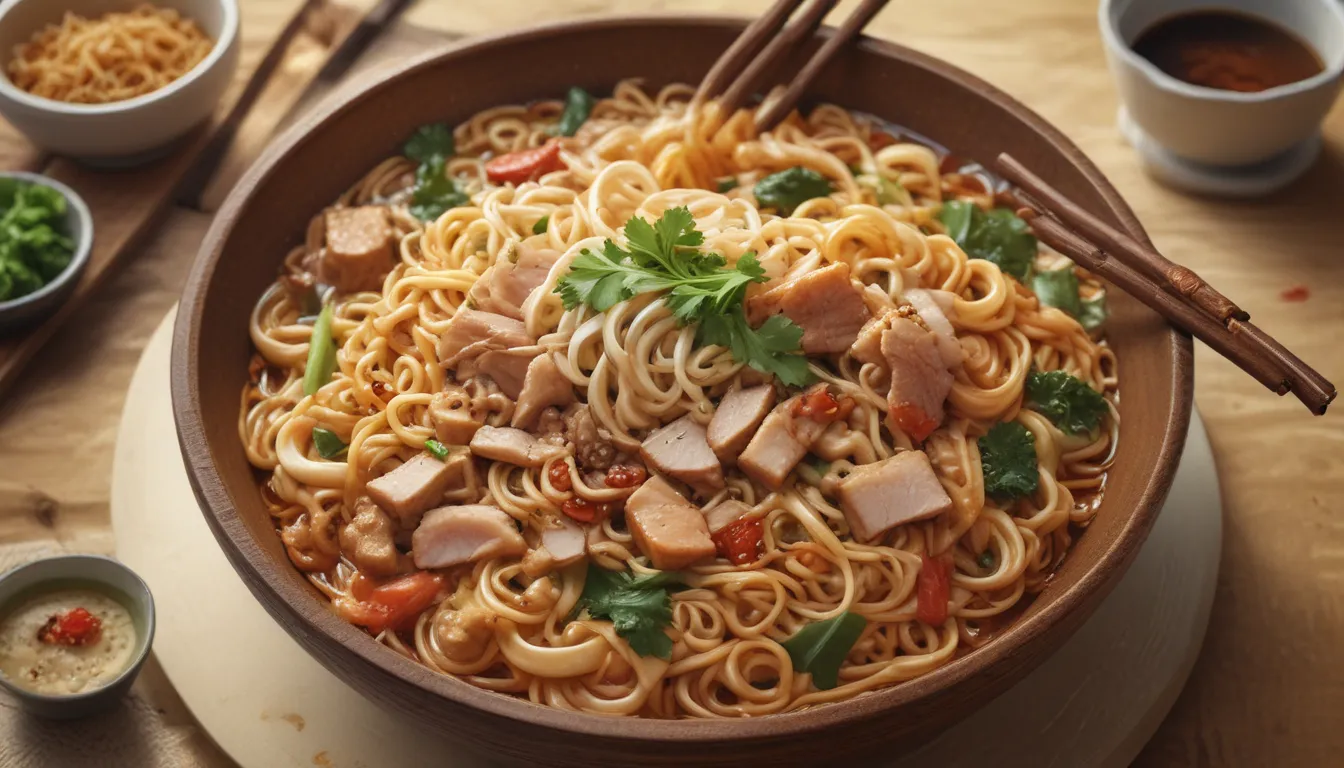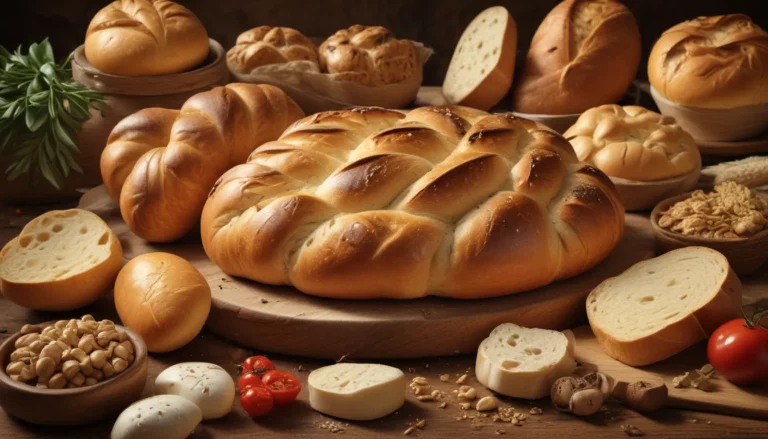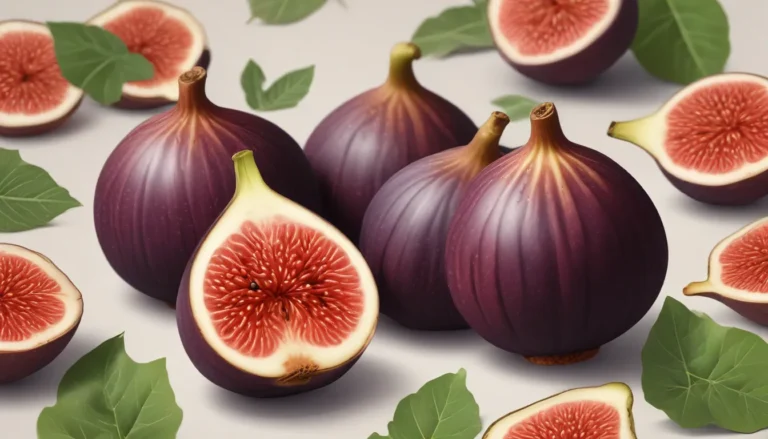The pictures in our articles might not always show exactly what the text is talking about. We use these images to make the article more interesting and eye-catching. They are there to add to the text, but not to replace it or show every detail.
If you're a fan of Asian cuisine, chances are you've come across Hokkien noodles at some point. Originating from the Fujian province in China, these delicious noodles have made their way from bustling street markets to the menus of Asian restaurants worldwide. But what sets Hokkien noodles apart from other dishes? Let's dive into the rich history and culinary diversity of Hokkien noodles as we uncover 17 intriguing facts about this delectable dish.
Unveiling the Origins of Hokkien Noodles
Hokkien noodles, also known as Fujian noodles, trace their roots back to the Fujian province in China. These noodles have garnered popularity not only in their place of origin but also around the globe, thanks to their chewy texture, yellow color, and delicious soy sauce flavor.
Exploring the Diverse Varieties of Hokkien Noodles
Hokkien noodles come in a variety of forms, from thin to thick noodles, stir-fried to soupy preparations. These noodles can be mixed with different ingredients like seafood, meat, or vegetables, making them a versatile and delightful choice for any meal.
Embracing the Chewy Texture of Hokkien Noodles
One of the defining characteristics of Hokkien noodles is their satisfying chewy texture. This delightful bite is a result of the high gluten content in the noodles, providing a unique and enjoyable eating experience.
Reveling in the Signature Yellow Hue of Hokkien Noodles
Hokkien noodles are typically known for their vibrant yellow color, achieved by using alkaline water or kansui during the noodle-making process. This distinctive hue adds to the visual appeal of the dish, making it even more enticing.
Savoring the Umami Flavor of Soy Sauce in Hokkien Noodles
Soy sauce plays a crucial role in seasoning Hokkien noodles, adding a savory and umami flavor to the dish. Infusing the noodles with this rich taste during the cooking process enhances the overall taste profile, making each bite a delight for the taste buds.
Influenced by Cantonese Cuisine
Hokkien noodles have been influenced by Cantonese cuisine, resulting in a fusion of unique flavors. Ingredients like bean sprouts, spring onions, and pork are commonly used in Cantonese-style Hokkien noodles, adding depth and complexity to the dish.
Journeying Through Regional Variations of Hokkien Noodles
Various regions have their own take on Hokkien noodles, adding their own twist to this beloved dish. For example, in Malaysia and Singapore, Hokkien Mee refers to thick egg noodles stir-fried with seafood and dark soy sauce, creating a flavorful and satisfying meal.
Hokkien Noodles Beyond China: A Global Culinary Adventure
Hokkien noodles have made their way to different countries worldwide, each adding their own unique touch to this versatile dish. In Thailand, Hokkien noodles are known as “bah mee” and are commonly found in street food stalls, while in Indonesia, they are called “mie goreng” and are stir-fried with a medley of ingredients and spicy sauce.
Nourishing Benefits of Hokkien Noodles
Aside from their delicious taste, Hokkien noodles can also be a nutritious choice. Low in fat and high in carbohydrates, these noodles provide sustained energy and are a good source of various vitamins and minerals, making them a wholesome meal option.
Hokkien Noodles: A Staple in Chinese Restaurants
Hokkien noodles have earned a permanent place in many Chinese restaurants worldwide due to their versatility and delicious flavors. Whether stir-fried, soupy, or served as a street food snack, these noodles are a favorite among diners looking for a tasty and satisfying meal.
Easy Preparation Makes Hokkien Noodles a Quick Meal Option
Preparing Hokkien noodles is a breeze, requiring just a few ingredients and simple cooking techniques. With minimal effort, you can whip up a flavorful dish in no time, making it a convenient choice for busy days or weeknight dinners.
Adapting Hokkien Noodles for Vegan and Vegetarian Diets
Hokkien noodles can be easily modified to suit vegan and vegetarian diets by omitting meat and seafood and increasing the vegetable content. This simple adaptation allows everyone to enjoy the delicious flavors of Hokkien noodles, regardless of dietary preferences.
Hokkien Noodles: The Quintessential Street Food Snack
In many Asian countries, Hokkien noodles are a popular street food snack, offering a quick and satisfying meal option for busy individuals on the go. Whether topped with meat, vegetables, or sauces, these noodles are a convenient and flavorful choice for street food enthusiasts.
Immersing in Noodle Soup Variations with Hokkien Noodles
Hokkien noodles are commonly used in noodle soup dishes, absorbing the flavors of the broth while providing a hearty base for toppings like sliced meat, vegetables, and garnishes. This versatile noodle adds depth and texture to noodle soups, creating a nourishing and comforting meal option.
Exploring Versatile Cooking Methods with Hokkien Noodles
Hokkien noodles can be cooked in a variety of ways, showcasing their versatility as an ingredient. Whether stir-fried, boiled in soup, or deep-fried for a crispy noodle dish, these noodles adapt well to different cooking techniques, allowing for endless culinary creativity.
Spreading the Love for Hokkien Noodles Worldwide
Hokkien noodles have captivated the taste buds of food enthusiasts around the world, earning a place on menus in bustling Asian cities and Western food establishments alike. This beloved dish continues to delight diners with its diverse flavors and cultural heritage, showcasing the global appeal of Chinese cuisine.
Embarking on a Hokkien Noodle Culinary Journey
In conclusion, Hokkien noodles are more than just a dish – they represent a rich culinary tradition with a global presence. Whether you prefer stir-fried, soupy, or street food versions, there's a Hokkien noodle variation to suit every palate. So, the next time you're craving a delicious and satisfying meal, why not give Hokkien noodles a try and indulge in the delightful flavors and cultural heritage they have to offer?
FAQs: Unveiling More Insights About Hokkien Noodles
Q: What are Hokkien noodles?
A: Hokkien noodles are a type of Chinese noodle dish typically featuring egg noodles stir-fried with a variety of ingredients like meat, seafood, vegetables, and sauces.
Q: Are Hokkien noodles gluten-free?
A: Traditional Hokkien noodles are not gluten-free as they are made from wheat flour. However, there are gluten-free alternatives available for those with dietary restrictions.
Q: How do you cook Hokkien noodles?
A: Hokkien noodles can be cooked by stir-frying them with oil, garlic, and ingredients of your choice, or by boiling them in a flavorful broth.
Q: What are popular toppings for Hokkien noodles?
A: Popular toppings for Hokkien noodles include sliced pork, shrimp, squid, chicken, mushrooms, bean sprouts, and green vegetables, providing a variety of flavors and textures.
Q: Can I customize the flavors of Hokkien noodles?
A: Yes, you can customize the flavors of Hokkien noodles by using different sauces and seasonings like soy sauce, oyster sauce, or hoisin sauce to create a personalized taste experience.
Q: Are Hokkien noodles spicy?
A: The spiciness of Hokkien noodles can vary based on the recipe or individual preference. Some versions may include chili or chili sauce for heat, while others may offer milder flavors.
Q: Can I find Hokkien noodles outside of Asia?
A: Yes, Hokkien noodles have gained international popularity and can be found in Asian supermarkets, restaurants worldwide, and even mainstream grocery stores in some regions, making them accessible to a global audience.
Embark on a Hokkien Noodle Adventure
Hokkien noodles are just one of many delightful offerings in the world of Chinese cuisine. From the vibrant colors to the complex flavors, each dish tells a unique story of culture and tradition. So, why not grab a pair of chopsticks and embark on a culinary journey through the fascinating realm of Asian food?
Your Feedback Matters
We value your feedback and strive to provide you with trustworthy and engaging content. Every fact on our platform is contributed by individuals like you, ensuring a diverse range of insights and information. Our dedicated editors rigorously review each submission to maintain the highest standards of accuracy and reliability. Trust in our commitment to quality and authenticity as you explore and learn with us.






